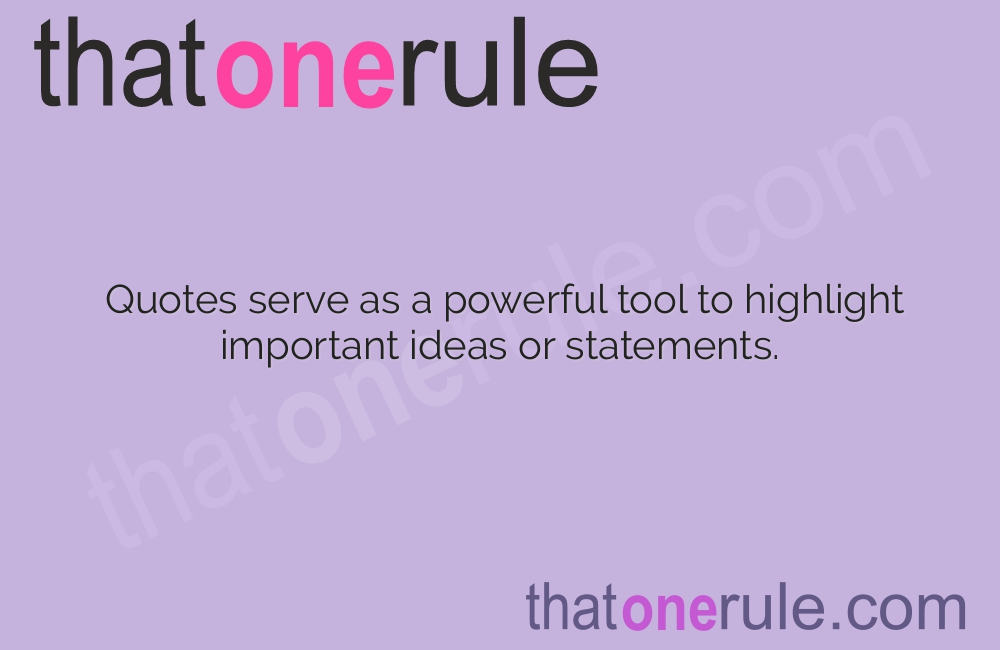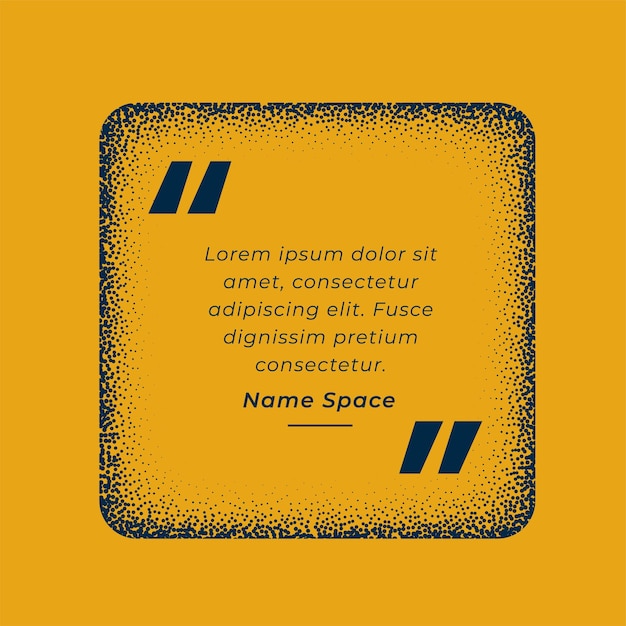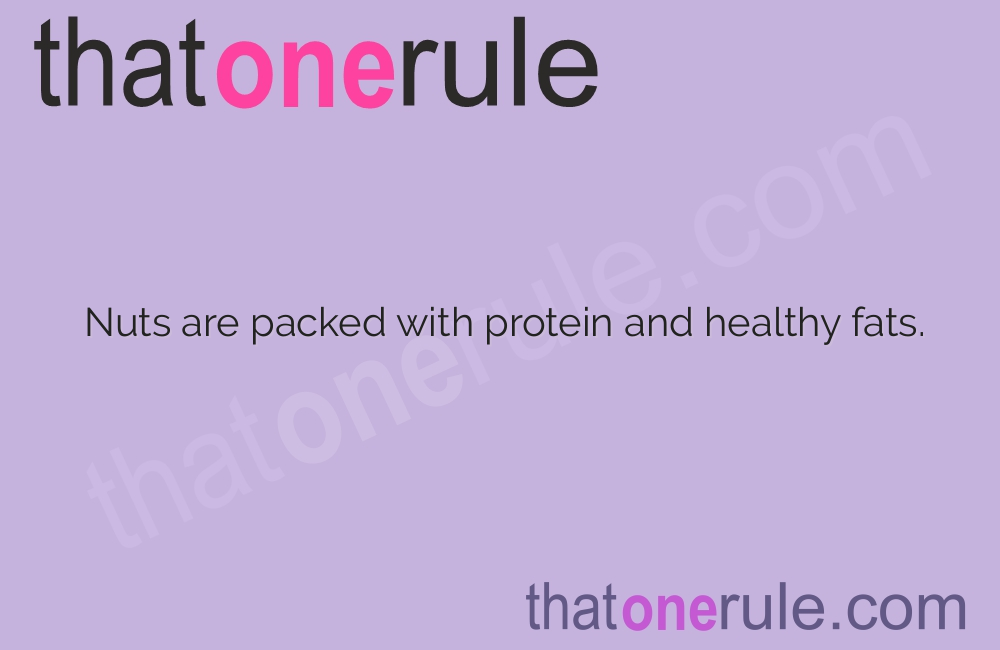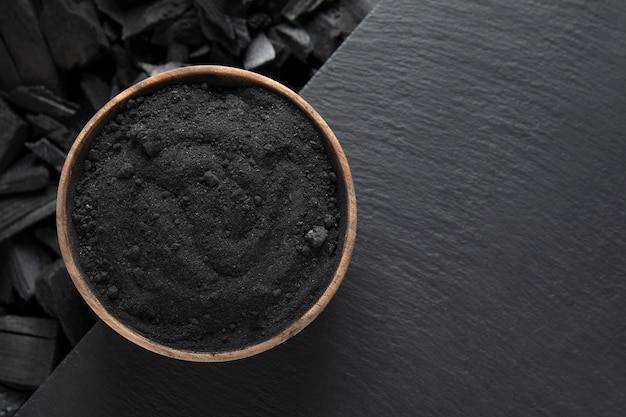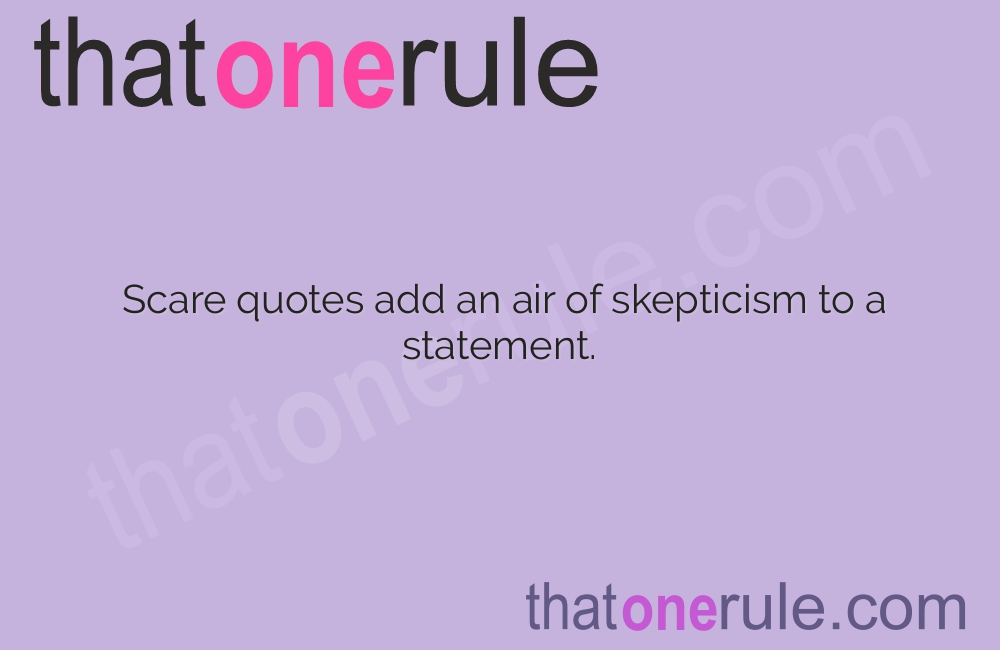When to Use Single Quotes vs Double
Single quotes are used when indicating a quote within a quote.
Double quotes are used to indicate spoken words or a direct quote.
Use single quotes for emphasis or to distinguish a specific phrase.
Double quotes are used for titles of articles, poems, or short stories.
Single quotes are used for titles of chapters or short sections.
Double quotes are used for titles of books, movies, or plays.
Use single quotes when referring to a word as a word.
Double quotes are used to highlight irony or sarcasm.
Single quotes can be used to introduce a new term or phrase.
Double quotes can be used to show disbelief or skepticism.
Use single quotes when referring to specific letters or symbols.
Double quotes are used to enclose a paraphrase or explanation.
Single quotes can be used to indicate alternative or informal spellings.
Use double quotes when providing a definition or definition-like explanation.
Single quotes can be used to indicate slang or colloquialisms.
Double quotes are used for quotations in academic or formal writing.
Use single quotes to indicate a cultural or regional expression.
Double quotes can be used to highlight a play on words or pun.
Single quotes are used to enclose song titles or lyrics.
Double quotes are used to indicate dialogue in a narrative.
Use single quotes to distinguish quoted material from the main text.
Double quotes can be used to mark off a word used in a specific context.
Single quotes are used for quotations within headings or subheadings.
Double quotes are used to indicate direct speech in journalistic writing.
Use single quotes when referring to a specific part of a larger work.
Double quotes can be used to indicate emphasis or stress on a word.
Single quotes are used for titles of short poems or individual songs.
Double quotes are used for dialogue tags or attributions in writing.
Use single quotes to indicate a direct translation or foreign word.
Double quotes can be used to enclose words used ironically or in a different sense.
Single quotes are used to enclose nicknames or informal names.
Double quotes are used when discussing scientific or technical terms.
Use single quotes to indicate a quote from a previous source.
Double quotes can be used to enclose text used as an example or illustration.
Single quotes are used for direct quotes within parentheses or brackets.
Double quotes are used to indicate a specific phrase or expression.
Use single quotes for quotes in footnotes or endnotes.
Double quotes can be used to indicate alternative meanings or interpretations.
Single quotes are used to enclose terms used idiomatically.
Double quotes are used to indicate words spoken by a character in a story.
Use single quotes to indicate a word used ironically or sarcastically.
Double quotes can be used to enclose words used in a non-literal sense.
Single quotes are used for dialogue within a larger quoted passage.
Double quotes are used to indicate a paraphrase or summary.
Use single quotes when referring to a specific line or section of a text.
Period Inside or Outside of Quotes – The Ultimate Guide
Periods are the tiny superheroes of punctuation.
In the realm of grammar, periods reign supreme.
A well-placed period can bring a sentence to a satisfying conclusion.
Periods are the silent guardians of grammar.
Without periods, sentences would be endless and chaotic.
Did you know that periods were once known as full stops?
Periods are the traffic lights of sentence structure.
Periods have the power to give clarity and structure to our thoughts.
The humble period can make all the difference between a run-on sentence and a well-crafted paragraph.
Don’t underestimate the impact of a well-placed period.
A period is like a tiny pause button in our written language.
Periods are the punctuation equivalent of a firm handshake.
Let your sentences breathe by inserting a period at the right moment.
A well-chosen period can make every word count.
With a period, a sentence reaches its natural conclusion.
Periods bring a sense of closure to our thoughts.
Periods are the maestros of sentence structure, conducting the flow of words.
Don’t be afraid to embrace the power of the period.
Like a musical note, a period indicates the end of one thought and the beginning of another.
Periods are the road signs that guide us through written language.
Master the art of the graceful period to elevate your writing style.
Periods are the unsung heroes of punctuation.
The period acts as a mediator between the chaos of words and the clarity of meaning.
A period can be a punctuation mark or a statement of intent.
A period is a small but essential component of every written language.
Like breadcrumbs, periods guide the reader through the narrative.
Use a period to assert your final word on a matter.
Periods are the full stops that allow us to breathe while reading.
Just like in life, sometimes a sentence needs a clear ending, marked by a period.
Periods punctuate our thoughts with precision.
A period is a gentle tap that signals the end of a sentence.
A well-executed period adds elegance to any piece of writing.
Periods act as milestones, allowing the reader to measure their progress through a text.
Periods are the stitching that holds sentences together.
Use a period to give weight and importance to your words.
A judicious period can give rhythm and flow to your writing.
Without periods, sentences would merge together into a shapeless mass of words.
Periods provide the necessary pauses in the symphony of language.
Let the period be your guide, leading you towards clear and concise communication.
Embrace the power of the period to enhance your writing.
Periods bring order to the chaos of words, like a conductor directing an orchestra.
A period is a small mark that makes a big impact.
Use a period to mark the end of one idea and prepare for the next.
Periods are the finishing touches that polish our sentences.
With a period, a sentence relinquishes control to the reader, allowing them to reflect on its meaning.
Book Titles – Italics or Quotes?
Beyond Words
Between the Lines
Unwritten Tales
Tangled Pages
Ink and Imagination
Lost in Literature
A Writer’s Journey
In the Pages of Time
Words Weave Worlds
Adventures in Typography
The Power of Punctuation
Quotation Marks and Story Sparks
Italicized Emotions
Books in Bold
Cursive Chronicles
The Art of Title Treatment
Captivating Quotations
Hidden Meanings in Italics
Expression and Typeface
The Magic of Book Titles
Bold and Beautiful
The Stories Behind the Quotes
Typography Tales
Judge a Book by Its Italics
The Stylish Side of Titles
Unlocking the Secrets of Quotation Marks
Italicize Your Imagination
The Book Title Effect
Underline Your Ideas
Punctuation as Art
Quotation Marks Unleashed
Inside the Italicized Mind
Typography: Beyond the Basics
Writing in Italics, Living in Quotes
The Curious Case of Titles
Letters, Words, and Italics
The Thrill of Typeface
Quotation Marks: More than Just a Symbol
The Art of Enclosing Words
Getting Creative with Titles
Emphasizing the Written Word
Scripted Stories
Lines, Dots, and Quotes
Experimenting with Typography
The Majesty of Italics
Should Quotes Be Placed Inside or Outside the Period?
A well-placed quote can inspire a movement.
Quotes can be a window into someone’s soul.
The right quote at the right time can change everything.
The power of words lies in the quotes we choose to believe.
Quotes remind us that we are not alone in our thoughts and emotions.
Inside or outside, quotes have the ability to provoke thought.
The beauty of quotes is in their ability to encapsulate complex ideas in a few words.
Quotes are like puzzle pieces that fit into the bigger picture of life.
Quotes are tiny seeds of wisdom that grow into mighty trees of inspiration.
A meaningful quote can be the catalyst for personal growth.
Inside or outside, quotes have the power to transcend time and space.
Quotes are breadcrumbs of wisdom leading us down the path of enlightenment.
The best quotes are like fireworks bursting in our minds.
Quotes are food for thought, nourishing our minds and souls.
Words spoken by others have the power to shape our own narratives.
Quotes have the ability to resonate with the deepest parts of our being.
Inside or outside, quotes can provide comfort during difficult times.
Quotes are a bridge connecting different cultures and generations.
The right quote can ignite a spark of creativity within us.
Quotes have the power to encapsulate the essence of a moment.
Inside or outside, quotes have the ability to transport us to different worlds.
Quotes are like small treasures waiting to be discovered.
The impact of a quote lies in the emotions it evokes.
Quotes have the power to challenge our beliefs and broaden our perspectives.
Inside or outside, quotes can be a source of strength during times of adversity.
Quotes are whispers of wisdom echoing through the corridors of time.
The beauty of quotes is in their ability to express in a few words what we struggle to articulate.
Quotes are like mirrors, reflecting back to us the truths we sometimes overlook.
Inside or outside, quotes can be a guiding light in a world of darkness.
Quotes have the ability to turn ordinary moments into extraordinary ones.
Quotes can be the compass guiding us towards our true north.
Inside or outside, quotes are the threads that weave the fabric of our thoughts.
The power of a quote lies in the emotions it stirs within us.
Quotes are the footprints left behind by those who have walked before us.
Inside or outside, quotes are the signposts that guide us on our journey of self-discovery.
Quotes have the power to reach deep into our souls and touch our hearts.
The impact of a quote is not measured by its length, but by the resonance it creates.
Inside or outside, quotes can be the nudge we need to take the leap of faith.
Quotes are like drops of wisdom in the vast ocean of knowledge.
Quotes have the power to ignite a fire within us and fuel our passions.
Inside or outside, quotes can be a source of inspiration when we need it most.
Quotes are reminders that we are part of a larger human experience.
The beauty of quotes is in their ability to distill complex ideas into simple truths.
Inside or outside, quotes are the breadcrumbs that lead us to our own inner wisdom.
Quotes have the power to transcend language barriers and unite us as human beings.
The Importance of Proper Punctuation – Period Outside of Quotes
Period outside of quotes is a grammatical rule that can be confusing.
Remember to always place the period outside of quotation marks in American English.
The rule about placing the period outside of quotes is often overlooked.
Don’t forget to adhere to the period outside of quotes rule in your writing.
When in doubt, consult a style guide to ensure you’re using periods correctly outside of quotes.
Placing the period outside of quotes can make your writing appear more professional.
Understanding the rule of the period outside of quotes is essential for clear communication.
Incorrectly placing the period inside of quotes can be a common mistake for non-native English speakers.
Learning proper punctuation rules, including the period outside of quotes, can enhance your writing skills.
Consistently using the period outside of quotes showcases attention to detail in your writing.
In British English, the rule about placing the period outside of quotes is different.
Following the period outside of quotes guideline can improve the clarity of your written work.
Have you encountered any difficulties with the rule of the period outside of quotes?
Writers often struggle with remembering to place the period outside of quotation marks.
Double-check your punctuation to ensure you’re correctly applying the period outside of quotes.
The period outside of quotes rule is essential for proper punctuation in American English.
Mastering the period outside of quotes can elevate your writing to a higher level.
Using the period outside of quotes correctly showcases your command of the English language.
Writers who neglect the period outside of quotes can undermine their credibility.
Do you find the period outside of quotes to be a challenging rule to remember?
Professional editors always pay attention to the period outside of quotes rule.
The period outside of quotes can sometimes be overshadowed by other punctuation rules.
Have you encountered any instances where placing the period outside of quotes felt counterintuitive?
Writers should prioritize correct placement of the period outside of quotes to ensure clarity.
Always consult a trusted grammar resource to confirm the proper usage of the period outside of quotes.
Writers can earn more respect by consistently applying the period outside of quotes.
Remembering to place the period outside of quotes showcases your commitment to precision.
The period outside of quotes is just one of many punctuation rules to keep in mind.
In formal writing, it is crucial to follow the period outside of quotes guideline.
Have you ever noticed inconsistencies regarding the period outside of quotes in published materials?
Understanding the period outside of quotes can be challenging for language learners.
Punctuation rules, including the period outside of quotes, exist to ensure effective communication.
Ignoring the period outside of quotes rule can negatively impact the clarity of your writing.
Proper placement of the period outside of quotes demonstrates your attention to grammatical details.
Writers should review examples to solidify their understanding of the period outside of quotes.
Did you know that certain style guides have exceptions to the period outside of quotes rule?
Applying the period outside of quotes in your writing helps establish credibility.
The period outside of quotes is especially important in professional and academic writing.
Revising your work to ensure correct usage of the period outside of quotes is crucial.
The period outside of quotes rule is a small but significant aspect of English grammar.
Paying careful attention to the period outside of quotes can help you avoid common punctuation mistakes.
Have you ever unintentionally placed a period inside of a quote, neglecting the period outside of quotes rule?
Practice is key to mastering punctuation rules, including the period outside of quotes.
Writers who consistently place the period outside of quotes are perceived as more credible.
Always proofread your work to confirm proper application of grammatical rules, including the period outside of quotes.
Single or Double Quotes
Single or double quotes, it’s all about personal preference.
Choosing between single or double quotes is like choosing between coffee or tea.
Single quotes add a touch of elegance to any sentence.
Double quotes are like a bold statement, they demand attention.
Single quotes, the understated heroes of punctuation.
Double quotes, the undeniable star of punctuation.
Using single quotes is like whispering in someone’s ear.
Double quotes are like shouting something from the rooftops.
Single quotes, adding a touch of magic to your words.
Double quotes, the exclamation marks of punctuation.
Choosing between single or double quotes is like choosing between a little black dress or a tailored suit.
Single quotes, the punctuation equivalent of a single rose.
Double quotes, the punctuation equivalent of a grand bouquet.
Using single quotes is like adding a pinch of salt to a recipe.
Double quotes, like a dash of chili powder, adding spice to your sentences.
Single quotes, the punctuation equivalent of a gentle breeze.
Double quotes, the punctuation equivalent of a hurricane.
Using single quotes is like painting with watercolors, subtle but beautiful.
Double quotes are like painting with bold, vibrant colors.
Single quotes, the punctuation equivalent of a whispered secret.
Double quotes, the punctuation equivalent of a bold declaration.
Using single quotes is like wearing a delicate necklace, adding a touch of elegance to your words.
Double quotes are like wearing a statement necklace, making a bold statement.
Single quotes, the punctuation equivalent of a handwritten love letter.
Double quotes, the punctuation equivalent of a heartfelt text message.
Using single quotes is like adding a sprinkle of fairy dust to your sentences.
Double quotes, like a burst of fireworks, making your words stand out.
Single quotes, the punctuation equivalent of a soft whisper.
Double quotes, the punctuation equivalent of a booming applause.
Using single quotes is like playing a soft melody on a piano.
Double quotes, the punctuation equivalent of an electric guitar solo.
Single quotes, the punctuation equivalent of a light drizzle.
Double quotes, the punctuation equivalent of a thunderstorm.
Using single quotes is like adding a dash of humor to your sentences.
Double quotes, like a comedian on stage, making everyone laugh.
Single quotes, the punctuation equivalent of a peaceful sunrise.
Double quotes, the punctuation equivalent of a stunning sunset.
Using single quotes is like wearing a delicate bracelet that catches everyone’s eye.
Double quotes are like wearing a bold statement necklace that steals the show.
Single quotes, the punctuation equivalent of a soft touch.
Double quotes, the punctuation equivalent of a firm handshake.
Using single quotes is like sipping a glass of fine wine, sophisticated and refined.
Double quotes are like downing a shot of tequila, bold and intense.
Single quotes, the punctuation equivalent of a gentle hug.
Double quotes, the punctuation equivalent of a high-five.
Understanding the Importance of Using Quotes in Writing
Quotes serve as a powerful tool to highlight important ideas or statements.
Use quotes to support your arguments and provide evidence for your claims.
Quotes add depth and perspective to your writing.
Quoting experts adds credibility to your work.
Quotes help to break up long passages of text and make them more readable.
Use quotes to emphasize the significance of certain phrases or words.
Quotes can be used to introduce a new perspective or point of view.
Quoting famous individuals can inspire and provoke thought.
Including quotes from primary sources adds authenticity to your writing.
Quotes can be used to illustrate complex concepts in a more relatable way.
Quoting influential figures can lend authority to your arguments.
Using quotes from historical events can make your writing more engaging.
Quotes can be used to draw attention to important details.
Quoting statistics or research findings adds credibility to your work.
Use quotes to encapsulate the essence of a particular topic or subject.
Including quotes from multiple sources provides a well-rounded perspective.
Quotes can bring a personal touch and connection to your writing.
Quoting authors or poets can add beauty and elegance to your work.
Use quotes to debunk myths or misconceptions.
Quotes can be used to analyze and interpret literary works.
Quoting well-known phrases or sayings adds familiarity and relatability.
Including quotes from interviews or personal experiences adds authenticity.
Quotes can provide historical context and background information.
Use quotes to give credit to the original source of ideas or information.
Quoting opposing viewpoints adds balance and objectivity to your arguments.
Quotes can serve as a starting point for further discussion or exploration.
Including quotes from legal documents or court cases adds legal validity.
Use quotes to highlight contradictions or inconsistencies in arguments.
Quotes can be used to express emotions or convey a certain tone.
Quoting from speeches or inspirational talks can motivate and inspire readers.
Quotes can be used to support your personal beliefs or values.
Including quotes from different time periods adds a sense of historical progression.
Use quotes to captivate your readers and make them think.
Quoting cultural references or popular media adds a modern touch to your work.
Quotes can be used to challenge commonly accepted notions or ideas.
Including quotes from scientific studies adds empirical evidence to your work.
Use quotes to create a sense of dialogue or conversation in your writing.
Quoting from influential works can showcase your knowledge and understanding.
Quotes can serve as an introduction or hook to capture readers’ attention.
Including quotes from religious texts or spiritual leaders adds depth and wisdom.
Use quotes to highlight societal issues or raise awareness about important topics.
Quoting from personal interviews adds a human touch to your writing.
Quotes can be used to promote empathy and understanding in your work.
Including quotes from humorists or comedians adds a lighthearted tone.
Use quotes to reinforce important messages or lessons in your writing.
When and How to Use Block Quotes
Block quotes are perfect for highlighting key passages in academic papers.
Use block quotes when you need to showcase a particularly powerful or impactful statement.
Block quotes add credibility and support to your research by showcasing expert opinions.
When a source speaks for itself, use a block quote to let it shine.
Block quotes are a great way to incorporate longer passages without overwhelming your own writing.
Use block quotes to give credit to other authors and avoid plagiarism.
When a source provides a unique or controversial viewpoint, use a block quote to present it accurately.
Block quotes help you break up the flow of your writing and add visual interest.
Use block quotes to provide historical context or primary source material.
When a source uses specific and compelling language, use a block quote to preserve its impact.
Block quotes allow you to directly engage with and analyze your sources.
Use block quotes to highlight contradictions or inconsistencies in source material.
When summarizing complex ideas, use block quotes to ensure accuracy.
Block quotes help you maintain objectivity by allowing sources to speak for themselves.
Use block quotes to emphasize the authority of well-known experts in a field.
When analyzing poetry or literature, use block quotes to showcase key passages.
Block quotes allow you to include longer excerpts from interviews or fieldwork in your writing.
Use block quotes to present statistical data or results from research studies.
Block quotes provide a visual break for readers and help guide their attention.
When quoting from legal documents or court cases, use block quotes to maintain accuracy.
Use block quotes to include excerpts from letters, diaries, or personal accounts.
Block quotes can emphasize the significance or relevance of a particular idea.
When summarizing a lengthy argument, use block quotes to condense the information.
Use block quotes to provide evidence for your claims and bolster your arguments.
Block quotes can be used to highlight the nuance or complexity of a topic.
When analyzing historical documents, use block quotes to preserve authenticity.
Use block quotes to capture the voice or tone of a source accurately.
Block quotes are ideal for highlighting memorable or quotable phrases.
When analyzing speeches or presentations, use block quotes to showcase key moments.
Use block quotes to include excerpts from books, articles, or scholarly journals.
Block quotes are valuable in identifying biases or personal opinions in source material.
When citing multiple sources, use block quotes to differentiate between different authors.
Use block quotes to provide context or background information for your readers.
Block quotes can be used to showcase contradictions or inconsistencies in source material.
When analyzing visual artwork, use block quotes to describe and interpret the piece.
Use block quotes to present examples or case studies that support your argument.
Block quotes help you maintain the integrity and accuracy of your sources.
When examining historical events, use block quotes to provide primary source evidence.
Use block quotes to showcase the breadth and depth of your research.
Block quotes can be used to introduce or summarize an entire section or chapter.
When analyzing film or television, use block quotes to discuss specific scenes or dialogue.
Use block quotes to provide counterarguments or alternative perspectives.
Block quotes allow you to analyze and critique the language used by other authors.
When discussing cultural or societal issues, use block quotes to include diverse perspectives.
Use block quotes to differentiate between your own ideas and the ideas of others.
Separating Fact from Fiction – The Truth about the Keystone Pipeline
The Keystone pipeline is an essential infrastructure project for America’s energy security.
Myths about the Keystone pipeline often overlook the significant economic benefits it can bring.
The Keystone pipeline has faced numerous regulatory hurdles, highlighting the complexity of energy projects.
Critics of the Keystone pipeline often ignore its potential to create thousands of jobs.
The Keystone pipeline would enhance North America’s energy independence.
False information about the Keystone pipeline undermines informed discussions about energy policy.
The Keystone pipeline won’t significantly contribute to global greenhouse gas emissions.
The Keystone pipeline’s construction would support local businesses and economies.
Arguments against the Keystone pipeline often overlook the extensive environmental reviews it has undergone.
The Keystone pipeline would provide a more secure and reliable method of transporting oil.
Misinformation about the Keystone pipeline prolongs the dependency on foreign oil.
The Keystone pipeline would increase the affordability and accessibility of oil for American consumers.
Myths about the Keystone pipeline project often overshadow its potential to strengthen energy infrastructure.
The Keystone pipeline has been the subject of extensive public input and consultation.
The Keystone pipeline’s proponents recognize the importance of stringent safety measures.
Opposition to the Keystone pipeline often stems from misunderstandings about its environmental impact.
The Keystone pipeline project includes safeguards to protect against spills and leaks.
The Keystone pipeline is part of a comprehensive energy strategy that balances economic and environmental concerns.
Myths about the Keystone pipeline perpetuate misconceptions about the role of oil in modern society.
The Keystone pipeline would contribute to lowering energy costs for American households and businesses.
Arguments against the Keystone pipeline fail to consider the economic benefits for indigenous communities.
The Keystone pipeline reflects ongoing efforts to modernize and improve energy infrastructure.
Myths surrounding the Keystone pipeline project can be dispelled by reviewing credible scientific studies.
The Keystone pipeline’s construction would provide a boost to struggling local economies.
Opposition to the Keystone pipeline often overlooks the role of oil in everyday life, from transportation to manufacturing.
The Keystone pipeline project aligns with national energy security priorities.
Arguments against the Keystone pipeline disregard the potential for technological advancements to reduce environmental risks.
The Keystone pipeline would help reduce America’s reliance on oil imports from unstable regions.
Myths about the Keystone pipeline are often fueled by misinformation from special interest groups.
The Keystone pipeline would contribute to the diversification of North American energy sources.
Opposition to the Keystone pipeline fails to consider the importance of a balanced energy portfolio.
The Keystone pipeline would provide a reliable source of energy during times of crisis or disruption.
Myths about the Keystone pipeline hinder the development of common-sense energy policies.
The Keystone pipeline’s construction would support a significant number of well-paying jobs.
Arguments against the Keystone pipeline ignore the rigorous safety protocols that would be implemented.
The Keystone pipeline is an opportunity to bolster North American energy independence.
Myths surrounding the Keystone pipeline disproportionately focus on worst-case scenarios rather than more probable outcomes.
The Keystone pipeline would help reduce transportation costs for oil producers.
Opposition to the Keystone pipeline fails to consider the role of fossil fuels in maintaining global living standards.
The Keystone pipeline project has been subject to rigorous environmental impact assessments.
Myths about the Keystone pipeline overlook the role it could play in strengthening US-Canada relations.
The Keystone pipeline would provide a boost to national and local tax revenue.
Arguments against the Keystone pipeline often overlook the strides made in oil extraction technology to minimize environmental impact.
The Keystone pipeline’s proponents recognize the importance of investing in renewable energy alongside traditional sources.
Myths surrounding the Keystone pipeline detract from the broader discussion of responsible energy development.
Should Book Titles be Italicized or in Quotes?
Book titles should be italicized to distinguish them from the rest of the text.
Using italics for book titles adds a stylish touch to your writing.
Quotation marks for book titles are outdated and less visually appealing.
Italicizing book titles helps to highlight their importance within the text.
Using quotes for book titles can make a sentence look cluttered.
Italics make it easier for readers to identify and remember book titles.
Quotation marks for book titles can be confusing when used in dialogue.
Book titles deserve the emphasis that italics provide.
Using italics for book titles follows the standard style guide rules.
Italics give book titles a professional and polished appearance.
Quotation marks should be reserved for direct speech, not book titles.
Italicizing book titles adds a layer of sophistication to your writing.
Consistently italicizing book titles in your writing shows attention to detail.
Quotation marks for book titles can interrupt the flow of a sentence.
Italics for book titles create a sense of distinction within the text.
Using quotes for book titles can make them less noticeable and impactful.
Book titles should stand out, and italics help achieve that.
Italicizing book titles helps readers quickly identify them as important references.
Quotation marks for book titles can create confusion when used with other types of quotes.
Italicized book titles make it easier for readers to locate and reference specific works.
Using quotes for book titles can make them blend in with the rest of the text.
Italics bring attention to book titles without overwhelming the reader.
Quotation marks for book titles can be distracting and unnecessary.
Italicizing book titles adds visual interest to your writing.
Consistency in italicizing book titles is aesthetically pleasing.
Using quotes for book titles can make them appear less significant.
Italics for book titles provide clarity and precision in writing.
Quotation marks for book titles can create ambiguity in sentence structure.
Italicizing book titles creates a clear distinction between them and other types of references.
Using quotes for book titles can make them seem like secondary elements in the text.
Book titles deserve to be visually emphasized, and italics accomplish that.
Quotation marks for book titles can be confusing when used with other forms of punctuation.
Italics for book titles enhance the overall readability of your writing.
Using quotes for book titles can make them appear less professional.
Italicizing book titles adds a touch of elegance to your writing.
Quotation marks for book titles can interfere with the visual flow of the text.
Book titles stand out more effectively when they are italicized.
Italics for book titles give the reader a visual cue of their importance.
Using quotes for book titles can make them seem like mere phrases rather than significant works.
Italicizing book titles can help to clarify the intended emphasis within a sentence.
Quotation marks for book titles can create unnecessary punctuation clutter.
Book titles should be distinguished with italics to avoid confusion with regular text.
Italics make it easier to locate and reference specific book titles.
Using quotes for book titles can give them a less prominent presence in the text.
Italicizing book titles is a standard practice that ensures clarity and consistency.
Punctuation Rules for Quotation Marks
Punctuation after quotes is a topic that often confuses students and writers alike.
The correct placement of punctuation after quotes can drastically change the meaning of a sentence.
Quotation marks serve as a visual cue to the reader that someone is speaking or that the words are borrowed from another source.
Using the proper punctuation after quotes shows respect for the rules of grammar.
Did you know that in British English, the punctuation always goes outside the quotation marks?
It’s crucial to pay attention to the placement of punctuation after quotes to avoid misunderstandings.
Punctuation after quotes is like the cherry on top of a well-written sentence.
The rules of punctuation after quotes are there to bring clarity to your writing.
Learning the proper punctuation after quotes can make your writing appear more professional.
Incorrect placement of punctuation after quotes is a common mistake that can be easily avoided.
Remember, punctuation after quotes should follow the style guide you are using.
Knowing the rules of punctuation after quotes gives you more control over your writing.
There is no one-size-fits-all approach to punctuation after quotes, as it may vary depending on the language or region.
Punctuation after quotes is a subtle yet essential aspect of effective communication.
Improper punctuation after quotes can lead to confusion and misinterpretation.
The way you punctuate after quotes can affect the flow and rhythm of your writing.
Take the time to master the rules of punctuation after quotes to enhance your writing skills.
Punctuation after quotes is like a puzzle that needs to be solved.
Knowing when to use a comma, period, or question mark after quotes can be tricky.
Using the right punctuation after quotes can lend credibility to your writing.
Punctuation after quotes adds an extra layer of precision to your words.
The correct placement of punctuation after quotes demonstrates your attention to detail.
Punctuation after quotes is like the frame that holds the words together.
Paying attention to punctuation after quotes showcases your commitment to writing well.
The rules for punctuation after quotes may seem arbitrary, but they serve a purpose.
Incorrect punctuation after quotes can alter the meaning of a sentence, sometimes dramatically.
Punctuation after quotes is not only about grammar; it’s about clarity and effective communication.
Think of punctuation after quotes as the finishing touch on your sentence.
Using the wrong punctuation after quotes can result in a sentence that lacks coherence.
Proper placement of punctuation after quotes is an essential skill for any writer or editor.
Punctuation after quotes is like the conductor guiding the reader through your writing.
The rules for punctuation after quotes may seem complex, but they can be mastered with practice.
Without proper punctuation after quotes, a sentence can feel incomplete or disjointed.
Punctuation after quotes is a fundamental aspect of written language that should not be overlooked.
Understanding the nuances of punctuation after quotes can elevate the quality of your writing.
Using the appropriate punctuation after quotes shows that you respect the integrity of the original text.
Paying attention to punctuation after quotes demonstrates your professionalism as a writer.
Punctuation after quotes may be a small detail, but it can make a big difference in how your writing is perceived.
The rules for punctuation after quotes are designed to promote clarity and consistency in written language.
Punctuation after quotes is like the punctuation mark that signals the end of a musical note.
Precision in punctuation after quotes is crucial for conveying the intended meaning of a sentence.
Remember that the placement of punctuation after quotes may vary depending on the situation or style guide.
Punctuation after quotes is a way to honor the source of the borrowed words or the speaker’s voice.
Mastering the rules of punctuation after quotes can improve the overall readability of your writing.
Don’t underestimate the importance of mastering punctuation after quotes; it can elevate your writing from good to great.
Should You Use Italics or Quotes for Movie Titles?
Resurgence: A Tale of Redemption
Silver Lining: Embracing Change
The Reflection: A Mirror of Truth
Whispers in the Dark: An Unlikely Love Story
Lost and Found: A Journey of Self-Discovery
Shattered Dreams: Piecing Life Together
Echoes of the Past: Unraveling Family Secrets
Serenity: Finding Peace in Chaos
The Art of Letting Go: A Story of Healing
Between the Lines: The Power of Words
Voices in the Wind: Chasing Dreams
Fading Colors: Embracing Impermanence
The Edge of Time: A Leap into the Unknown
Silent Whispers: Uncovering Hidden Truths
The Phoenix Effect: Rising from the Ashes
Infinite Possibilities: Exploring the Unknown
Captive Hearts: Love that Transcends Boundaries
Hidden Gems: Discovering True Beauty
Lost in Translation: A Journey of Connection
The Language of Silence: Unspoken Stories
Chasing Shadows: A Thrilling Pursuit
Whirlwind of Emotions: Dancing through Life
The Enigma: Unlocking the Mystery
The Wild Unknown: Exploring Uncharted Territory
Parallel Worlds: A Glimpse into Other Realities
Sailing through Storms: Navigating Life’s Challenges
Echoes of Destiny: Embracing Fate
Wandering Souls: Seeking Redemption
The Power Within: Unleashing Hidden Strength
Melodies in Motion: A Symphony of Life
Through the Looking Glass: A Journey of Perception
Whispers of Wisdom: Finding Guidance in Unexpected Places
Threads of Time: Weaving the Story of Eternity
Divided Loyalties: A Battle for the Soul
Behind Closed Doors: Unmasking the Truth
Fading Footsteps: A Legacy Remembered
The Sound of Silence: Embracing Solitude
Serenade of the Stars: Dreams that Span the Universe
Invisible Boundaries: Breaking Barriers
Suspended Animation: The Essence of Timelessness
The Ripple Effect: Changing Lives, One Moment at a Time
Notes from the Underground: Dissonance in Society
The Glass Ceiling: Shattering Limitations
Life’s Director’s Cut: A Story Worth Telling
Revealing Reflections: Unveiling the True Self
Nutritional Facts of Nuts per 100g
Nuts are packed with protein and healthy fats.
Enjoying a handful of nuts each day can improve your heart health.
Nuts are a natural source of antioxidants, which help fight off harmful free radicals.
Eating nuts can provide a great energy boost and keep you feeling full for longer.
Nuts are a wonderful addition to a balanced diet due to their high nutrient content.
Incorporating a variety of nuts into your diet can provide a wide range of essential vitamins and minerals.
Research shows that regularly consuming nuts can lower the risk of developing chronic diseases such as diabetes.
Nuts are an excellent source of dietary fiber, promoting a healthy digestive system.
The healthy fats in nuts can actually help you lose weight by curbing cravings and promoting satiety.
Nuts contain phytosterols, which can help lower cholesterol levels.
Snacking on nuts can support brain health and improve cognitive function.
Nuts are a versatile ingredient in cooking and baking, adding texture and flavor to dishes.
Including nuts in your diet can boost your immune system and promote overall wellness.
Nuts are naturally gluten-free, making them a great option for those with dietary restrictions.
Nuts provide a convenient and portable snack option for busy individuals on the go.
Nuts can be enjoyed as a post-workout snack to aid in muscle repair and recovery.
Substituting unhealthy snacks with nuts can help you maintain a healthy weight.
Nuts are known to have anti-inflammatory properties, benefiting those with inflammatory conditions.
Nuts are low in carbohydrates and can be included in a ketogenic or low-carb diet.
Nuts are a great addition to vegetarian and vegan diets, as they are an excellent plant-based protein source.
Nuts are naturally cholesterol-free and are a heart-healthy alternative to other snack options.
Nuts are a satisfying and fulfilling snack that can help prevent overeating.
A handful of nuts each day can contribute to stronger bones and teeth due to their calcium content.
Nuts are rich in magnesium, which plays a crucial role in regulating blood pressure.
Nuts are a great source of iron, making them an important food for those at risk of anemia.
Including nuts in your diet can improve skin health and promote a youthful appearance.
Nuts are a delicious and nutritious addition to salads, adding crunch and flavor.
Nuts are a fantastic source of omega-3 fatty acids, which are essential for optimal brain function.
Snacking on nuts can help stabilize blood sugar levels, making them a smart choice for diabetics.
Nuts are a nutrient-dense food that can be enjoyed by individuals of all ages.
Nuts are a natural mood booster, thanks to their high content of healthy fats and essential nutrients.
Eating a handful of nuts before bed can promote a restful night’s sleep due to their tryptophan content.
Nuts can provide relief from constipation and promote a healthy digestive system.
Nuts are a great source of plant-based protein for those following a vegetarian or vegan lifestyle.
Adding nuts to your meals can enhance the nutritional value and make them more satisfying.
Nuts make for a great on-the-go snack that is easy to pack and store.
Nuts are a healthy and crunchy alternative to unhealthy processed snacks.
Nuts can be enjoyed in various forms, including raw, roasted, or in nut butters.
Nuts are a guilt-free snack that can be enjoyed in moderation as part of a balanced diet.
Including a variety of nuts in your diet can help combat nutrient deficiencies.
Nuts are a food that can be enjoyed by people with various dietary restrictions or intolerances.
Nuts are an excellent source of vitamin E, which is essential for healthy skin and hair.
Snacking on nuts can help improve memory and cognitive function, especially in older adults.
Nuts are a great source of monounsaturated fats, which can help reduce bad cholesterol levels.
Adding nuts to your favorite desserts can make them healthier, without compromising on taste.
Discover the Nutrition Facts of Cheddar Cheese
Cheddar cheese is a delicious and nutrient-rich food option.
The nutrition facts of cheddar cheese emphasize its high protein content.
Cheddar cheese is a great source of calcium, essential for strong bones and teeth.
Indulging in cheddar cheese can provide a good dose of vitamin K2, promoting heart health.
The creamy texture of cheddar cheese is the result of its high fat content.
Cheddar cheese, when consumed in moderation, can be a part of a balanced diet.
Cheddar cheese pairs beautifully with fruits, adding both flavor and nutritional value to your snack.
The tangy flavor of aged cheddar cheese is intensified by its complex nutritional profile.
Sprinkle some shredded cheddar cheese on your salad for a delicious and nutritious boost.
Cheddar cheese contains important minerals like phosphorus, which plays a role in energy production.
Cheddar cheese is a versatile ingredient that can be used in various dishes from mac and cheese to sandwiches.
The smooth meltability of cheddar cheese is due to its unique nutritional composition.
Cheddar cheese nutrition facts highlight its low carbohydrate content, making it suitable for low-carb diets.
Enjoy a slice of cheddar cheese with whole-grain crackers for a satisfying and well-rounded snack.
The vibrant orange color of some cheddar cheese varieties is a result of the natural coloring agent, annatto.
Cheddar cheese nutrition facts remind us of its place in history as one of the oldest cheese varieties.
The calcium content in cheddar cheese promotes optimal nerve and muscle functioning.
Cheddar cheese is a great source of phosphorus, which is essential for strong and healthy bones.
Savor the sharp and tangy flavor of cheddar cheese, knowing it also provides essential nutrients.
Cheddar cheese is a wholesome food option for those following a ketogenic diet.
The nutrition facts of cheddar cheese emphasize its high vitamin B12 content, crucial for nerve health.
Cheddar cheese can add a burst of flavor to your omelet or scrambled eggs.
Cheddar cheese is a convenient and nutritious snack option for those on the go.
Bite into a grilled cheese sandwich, relishing the delicious taste and the nutritional benefits of cheddar cheese.
Cheddar cheese offers a good balance of essential amino acids, necessary for growth and repair.
The creamy and slightly salty taste of cheddar cheese is a result of its nutritional composition.
Sprinkle some grated cheddar cheese on your pasta for a simple yet satisfying meal.
The texture of cheddar cheese varies from smooth and creamy to crumbly and sharp, providing options for different tastes.
Cheddar cheese provides a substantial amount of vitamin A, which is essential for good vision.
The rich and robust flavor of aged cheddar cheese is a testament to its high-quality nutrition.
Cheddar cheese can be enjoyed on its own or paired with other ingredients, adding both taste and nutrition to your meals.
Cheddar cheese is a natural source of conjugated linoleic acid (CLA), which may have health benefits.
The nutritional benefits of cheddar cheese make it a popular choice among athletes and fitness enthusiasts.
Satisfy your cravings with a cheese platter that includes a variety of cheddar cheese options, each offering unique nutrition.
Cheddar cheese is a good source of high-quality protein, necessary for tissue repair and growth.
The flavor and texture of cheddar cheese enhance the enjoyment of indulgent dishes like cheeseburgers and nachos.
Cheddar cheese nutrition facts underscore its role as a nutrient-dense dairy product.
Cheddar cheese can be grated and used as a topping for soup or chili, adding both flavor and nutrition.
The calcium content in cheddar cheese contributes to optimal blood clotting and wound healing.
Cheddar cheese pairs well with wine, creating a combination of flavors that is both indulgent and nutritious.
The nutritional benefits of cheddar cheese extend beyond its taste, making it a wholesome addition to your diet.
Cheddar cheese is a valuable source of omega-3 fatty acids, which have been linked to numerous health benefits.
Swap your usual processed cheese for flavorful cheddar cheese, elevating the nutritional value of your meal.
Cheddar cheese can be enjoyed by people of all ages, providing essential nutrients at every stage of life.
The next time you enjoy a cheese board, remember the rich and robust flavors of cheddar cheese and its impressive nutritional profile.
Shilajit – An Insight into Its Nutritional Facts
Shilajit is a natural substance with numerous nutritional benefits.
A small amount of shilajit contains a powerful blend of vitamins and minerals.
Shilajit is rich in fulvic acid, which supports nutrient absorption in the body.
Shilajit provides a natural energy boost, perfect for a busy lifestyle.
The antioxidants in shilajit help to fight against harmful free radicals in the body.
Shilajit supports healthy brain function and cognitive abilities.
Shilajit is known to enhance athletic performance and improve recovery time.
The iron content in shilajit helps to prevent anemia and support healthy blood flow.
Shilajit contains trace minerals that support bone strength and density.
Regular consumption of shilajit can improve skin health and promote a youthful appearance.
Shilajit is a natural detoxifier that helps to eliminate toxins from the body.
Shilajit has been used for centuries as a natural remedy for various ailments.
Shilajit supports a healthy immune system, helping to fight off infections and diseases.
The nutrients in shilajit promote healthy digestion and improve gut health.
Shilajit is an excellent source of natural antioxidants, supporting overall health and wellbeing.
Shilajit can help to balance hormones and improve reproductive health.
Regular consumption of shilajit can improve mood and reduce symptoms of depression and anxiety.
Shilajit supports liver health and aids in detoxification processes.
Shilajit is a natural anti-inflammatory, helping to reduce pain and inflammation in the body.
Shilajit contains amino acids that support muscle recovery and growth.
Shilajit improves nutrient absorption, ensuring that the body receives maximum benefits from food.
The minerals in shilajit promote healthy hair growth and prevent hair loss.
Shilajit supports cardiovascular health and helps to lower blood pressure.
Shilajit boosts collagen production, leading to improved skin elasticity and reduced wrinkles.
Regular consumption of shilajit can improve memory and cognitive function.
Shilajit helps to regulate blood sugar levels, making it beneficial for those with diabetes.
The nutrients in shilajit improve liver function and aid in the removal of toxins from the body.
Shilajit can help to alleviate symptoms of chronic fatigue and increase overall energy levels.
Shilajit supports kidney function and helps to prevent kidney stones.
Regular consumption of shilajit improves sleep quality and promotes better rest.
Shilajit supports a healthy respiratory system and aids in the treatment of respiratory conditions.
Shilajit helps to reduce inflammation in the joints, making it beneficial for those with arthritis.
The antioxidants in shilajit protect against cellular damage and premature aging.
Shilajit supports a healthy metabolism, aiding in weight management.
Shilajit improves nutrient absorption, ensuring that the body receives all essential vitamins and minerals.
Regular consumption of shilajit can improve liver function and aid in the removal of toxins from the body.
Shilajit helps to balance hormones, leading to improved mood and reproductive health.
The minerals in shilajit promote bone strength and prevent the risk of osteoporosis.
Shilajit supports healthy skin by improving collagen production and reducing wrinkles.
Shilajit aids in the digestion process and improves gut health.
Regular consumption of shilajit can boost the immune system and help fight off infections.
Shilajit helps to reduce inflammation in the body and alleviate pain.
Shilajit improves cognitive function and memory retention.
The nutrients in shilajit support cardiovascular health and help lower blood pressure.
Shilajit provides a natural energy boost without the crash associated with caffeine or sugar.
Understanding the Concept of Scare Quotes
Scare quotes add an air of skepticism to a statement.
The use of scare quotes allows for a nuanced understanding of a phrase.
Scare quotes can be a subtle way of expressing disagreement.
Sometimes scare quotes can make a statement sound sarcastic.
Scare quotes can be seen as a form of linguistic irony.
Using scare quotes can elicit a range of emotional responses.
Scare quotes can challenge the assumed meaning of a word or phrase.
Scare quotes can serve as a linguistic tool for precision.
Scare quotes offer a way to distance oneself from a particular concept.
Scare quotes can provoke thought and critical analysis.
Scare quotes can make a statement appear dubious.
Scare quotes can be used strategically to undermine an argument.
The intent behind scare quotes is often open to interpretation.
Scare quotes can create a sense of irony or disbelief.
Scare quotes can signal a departure from conventional meanings.
Using scare quotes can demonstrate a certain level of skepticism.
Scare quotes can be used to emphasize the differences between intended and surface meanings.
Scare quotes can be jarring, but they serve a purpose.
Scare quotes invite the reader to question the underlying assumptions.
Scare quotes can convey a layer of complexity to a statement.
Using scare quotes allows for a deeper exploration of language and meaning.
Scare quotes can be seen as a form of literary device.
Scare quotes challenge the notion of fixed definitions.
Scare quotes can highlight language’s inherent subjectivity.
Scare quotes can make the reader pause and reflect on the statement.
Scare quotes can be used to cast doubt on a commonly accepted belief.
Using scare quotes can be an effective rhetorical strategy.
Scare quotes can blur the line between fact and interpretation.
Scare quotes serve as a reminder that language is fluid and evolving.
Scare quotes allow for multiple meanings to coexist within a statement.
Scare quotes can be used to express humor or irony.
Using scare quotes can illuminate the power dynamics embedded in language.
Scare quotes can be a subversive tool in challenging established discourse.
Using scare quotes helps to navigate the complexities of meaning.
Scare quotes can be a form of linguistic rebellion.
Scare quotes force the reader to actively engage with the statement.
Scare quotes can be used to dismantle oversimplified narratives.
Using scare quotes can highlight the limitations of language.
Scare quotes can make a statement appear more thought-provoking.
Scare quotes add a layer of ambiguity to a statement.
Using scare quotes can convey a sense of skepticism towards authority.
Scare quotes help to disrupt the status quo of language.
Scare quotes can be a form of intellectual resistance.
Using scare quotes can challenge societal norms and biases.
Scare quotes inspire critical thinking and questioning of assumptions.
Urine Drug Test Facts – Everything You Need to Know
Urine drug tests are commonly used to detect the presence of illicit substances in a person’s system.
These tests can provide important information about a person’s drug use habits and help identify potential substance abuse issues.
Urine drug tests are non-invasive and can be easily administered in a variety of settings, such as workplaces or rehabilitation centers.
The accuracy of urine drug tests can vary depending on the specific substances being tested for and the timing of the test.
False-positive and false-negative results are possible with urine drug tests, so confirmatory testing is often necessary.
Many different drugs can be detected through urine tests, including marijuana, cocaine, opioids, amphetamines, and benzodiazepines.
The detection window for each drug can vary, with some substances being detectable for only a few days and others for several weeks.
Factors such as metabolism, hydration levels, and dosage can influence the length of time drugs are detectable in urine.
Synthetic urine products are available on the market, which can be used to try and cheat urine drug tests.
Adulteration of urine samples, such as adding substances to mask drug use, is a common issue with drug testing.
Proper chain of custody procedures must be followed to ensure the integrity of urine samples during drug testing.
Some medications and legal substances can also result in positive urine drug test results, so it’s important to disclose any relevant information prior to testing.
Urine drug tests are widely used by employers to ensure a safe and drug-free work environment.
The use of urine drug tests in the criminal justice system helps with monitoring probation or parole compliance.
Urine drug tests play a crucial role in addiction treatment programs, as they provide evidence of sustained sobriety.
Urine drug tests are not foolproof and can be susceptible to human error, sample tampering, or testing equipment malfunction.
Positive urine drug test results should be followed up with further assessment and interventions to address substance abuse issues.
Urine drug tests can be a deterrent for potential drug use, as individuals may fear the consequences of a positive result.
Some drug testing panels can detect multiple drugs simultaneously, allowing for a comprehensive assessment of substance use.
Drug testing policies and procedures should be regularly reviewed to ensure they align with current best practices and legal requirements.
The accuracy of urine drug tests can be influenced by the pH and temperature of the urine sample.
In some cases, individuals may be required to undergo observed urine drug tests to prevent sample tampering.
The development of new drug testing technologies continues to improve the accuracy and efficiency of urine drug tests.
Quick and accurate urine drug test results can help facilitate timely interventions and treatment for individuals struggling with substance abuse.
Federal regulations dictate specific requirements for workplace drug testing, including the use of certified laboratories and proper documentation.
Variations in drug metabolism among individuals can lead to different detection times for the same substance in urine.
Routine drug testing can be an effective way to deter drug use and maintain a substance-free environment.
Urine drug tests can provide valuable information to clinicians for making informed treatment decisions.
Some industries, such as transportation or healthcare, have strict urine drug testing regulations to ensure public safety.
Urine drug tests are one of the most common methods used for drug testing due to their relative simplicity and cost-effectiveness.
Certain factors, such as age, gender, and overall health, can influence how long drugs stay in urine and can be detected.
Non-invasive nature of urine drug tests makes them less invasive than other methods, such as blood or hair follicle tests.
For accurate results, urine drug tests should be performed by trained professionals following proper protocols.
The detection of specific drug metabolites in urine can provide information about the timing and frequency of drug use.
Urine drug tests can be an essential tool for monitoring individuals in substance abuse treatment programs to ensure compliance.
The use of cutoff levels helps determine the concentration of drugs necessary for a positive urine drug test result.
Urine drug tests are often used in forensic toxicology to determine drug use in criminal investigations.
Confirmatory testing methods, such as gas chromatography-mass spectrometry (GC-MS), are used to validate positive urine drug test results.
Drug testing technology continues to evolve, with the development of new methods for detecting previously undetectable substances.
Some individuals resort to various strategies to try and beat urine drug tests, such as dilution or substitution.
The accuracy of urine drug tests can be affected by certain medical conditions or medications, leading to potential false results.
Different industries and organizations have varying guidelines and requirements when it comes to urine drug testing.
Some states have implemented laws and regulations regarding employer drug testing practices to ensure fairness and privacy protection.
Drug testing in schools can help identify students at risk for substance abuse and provide appropriate interventions.
The use of urine drug tests has contributed to the overall understanding of substance abuse trends and patterns in different populations.
Key Facts about the Keystone Pipeline
The Keystone pipeline is a vital energy infrastructure project.
The Keystone pipeline is designed to transport oil from Canada to the United States.
The Keystone pipeline has faced numerous controversies and debates.
The construction of the Keystone pipeline provides employment opportunities.
The Keystone pipeline aims to reduce American dependence on foreign oil.
The Keystone pipeline has faced environmental concerns due to potential oil spills.
The Keystone pipeline has the potential to boost North American energy security.
The economic benefits of the Keystone pipeline include increased investment and revenue.
The Keystone pipeline has the capacity to transport over 800,000 barrels of oil per day.
The Keystone pipeline has faced legal battles and regulatory hurdles.
The Keystone pipeline is expected to contribute to the growth of North American oil production.
The Keystone pipeline has faced opposition from indigenous communities.
The construction of the Keystone pipeline creates job opportunities for local communities.
The Keystone pipeline’s route passes through sensitive ecological areas.
The Keystone pipeline is part of a larger effort to improve energy infrastructure in North America.
The Keystone pipeline has the potential to reduce transportation costs for oil producers.
The construction of the Keystone pipeline is a complex engineering project.
The Keystone pipeline has faced delays in its construction and operation.
The Keystone pipeline has the ability to diversify North American oil supply sources.
The Keystone pipeline will contribute to the economic growth of both Canada and the United States.
The Keystone pipeline has raised concerns about oil extraction methods in Canada.
The Keystone pipeline is seen as a safer alternative to transporting oil by rail or truck.
The Keystone pipeline brings both economic and environmental considerations to the forefront.
The Keystone pipeline has been a key point of contention in the political landscape.
The construction of the Keystone pipeline requires extensive environmental impact assessments.
The Keystone pipeline has the potential to reduce carbon emissions by replacing less efficient transport methods.
The Keystone pipeline has faced opposition from environmental groups due to climate change concerns.
The Keystone pipeline construction has contributed to technological advancements in pipeline engineering.
The Keystone pipeline project supports the North American energy integration.
The Keystone pipeline has faced protests and demonstrations.
The Keystone pipeline has been viewed as a symbol of the struggle between fossil fuels and renewable energy.
The Keystone pipeline has faced legal challenges related to land rights and indigenous rights.
The Keystone pipeline project has faced criticism for its potential impact on water sources.
The Keystone pipeline has the potential to strengthen Canada-US relations.
The Keystone pipeline has been a topic of discussion in international energy forums.
The Keystone pipeline has the capacity to transport oil from the Alberta oil sands.
The Keystone pipeline project has undergone significant revisions to address environmental concerns.
The Keystone pipeline has sparked debates on energy sustainability and climate change.
The Keystone pipeline is supported by some as a means to reduce reliance on Middle Eastern oil.
The Keystone pipeline has the potential to create new markets for Canadian oil producers.
The Keystone pipeline has faced opposition based on concerns of potential leaks and spills.
The Keystone pipeline project has encountered regulatory challenges at both the state and federal levels.
The Keystone pipeline has led to discussions on the future of fossil fuels in the energy landscape.
The Keystone pipeline has faced criticism for its potential impact on wildlife habitats.
The Keystone pipeline has the potential to contribute to energy independence and security.
Facts about steroids
Steroids are a class of organic compounds with a unique molecular structure.
Anabolic steroids are synthetic substances that mimic the effects of testosterone.
Steroids have both medical and non-medical uses.
Steroids can be used to treat hormonal disorders and certain types of cancers.
Misuse of steroids can lead to numerous adverse health effects.
Steroids are commonly abused by athletes and bodybuilders to enhance performance and muscle growth.
Long-term use of steroids can result in liver damage and cardiovascular problems.
Steroids can increase the risk of psychiatric disorders, such as aggression and depression.
Some steroids have legitimate medical uses, such as reducing inflammation and treating asthma.
Steroids can alter the hormonal balance in the body, leading to reproductive and sexual problems.
The use of steroids without a prescription is illegal in many countries.
Steroids can be addictive, leading to withdrawal symptoms when discontinued.
Steroids can cause skin problems, such as acne and oily skin.
Steroids can affect bone growth and development in adolescents.
Certain types of steroids can improve the body’s ability to retain nitrogen, promoting muscle growth.
Steroids can suppress the immune system, making users more susceptible to infections and diseases.
Prolonged steroid use can cause hormonal imbalances and disruption of the endocrine system.
Steroids can increase the risk of tendon and ligament injuries due to the rapid muscle growth they promote.
Steroids can cause high blood pressure and increase the risk of heart attacks and strokes.
Steroids can lead to stunted growth in children and adolescents.
The abuse of steroids can result in liver tumors and cancer.
Steroids can cause masculinizing effects in women, such as facial hair growth and deepening of the voice.
Steroids can cause irregular menstrual cycles and infertility in women.
The use of steroids during pregnancy can harm the fetus and increase the risk of birth defects.
Steroids can impair cognitive function and lead to mood swings and emotional instability.
Steroids can reduce the body’s natural production of testosterone, leading to dependency on external sources.
Steroids can cause fluid retention and weight gain.
Steroids can increase the risk of tendon ruptures and muscle strains due to the imbalance they create between muscle strength and tendon integrity.
Steroids can interfere with sleep patterns and cause insomnia.
Steroids can have detrimental effects on cholesterol levels, increasing the risk of cardiovascular disease.
The use of veterinary steroids in livestock can lead to the consumption of potentially harmful residues by humans.
Steroids can suppress appetite, leading to weight loss and malnutrition.
Steroids can cause liver damage and jaundice.
The unregulated use of steroids in the cosmetic industry can lead to unsafe products and potential health risks.
Steroids can lead to addiction and the need for higher doses to achieve the same effects.
Steroids can alter the balance of electrolytes in the body, leading to imbalances and potential complications.
Steroids can increase the risk of tendonitis and other overuse injuries.
Steroids can impair the body’s natural healing process, leading to delayed recovery from injuries.
The use of steroids in sports is considered cheating and is banned by most professional organizations.
Steroids can cause a condition known as roid rage, characterized by sudden bursts of aggression and anger.
Steroids can cause hair loss and baldness in both men and women.
Steroids can lead to liver failure and the need for organ transplantation.
Long-term steroid use can weaken the immune system, making users more susceptible to infections and illnesses.
Steroids can increase the risk of tendon tears and ruptures during physical activities.
Steroids can have long-lasting effects on brain function and cognition, including memory and concentration problems.
Fascinating Facts About Mitosis
Mitosis is a process of cell division that ensures the growth and development of living organisms.
Mitosis is a fundamental process for the propagation of genetic information.
Mitosis is the key mechanism behind tissue regeneration in multicellular organisms.
Mitosis allows for the creation of identical cells, ensuring genetic stability.
During mitosis, a single cell divides into two identical daughter cells.
Mitosis is a highly regulated process that involves several stages.
The stages of mitosis include prophase, metaphase, anaphase, and telophase.
Each stage of mitosis has specific characteristics and functions.
DNA replication occurs before mitosis to ensure that each daughter cell has a complete set of genetic information.
Mitosis is crucial for the repair of damaged tissues.
Mitosis allows organisms to grow and develop by increasing their cell number.
Mitosis occurs in all eukaryotic organisms.
Mitosis is a continuous process, with cells constantly undergoing division.
Mitosis helps in maintaining a constant cell population in tissues.
Mitosis plays a significant role in the formation of gametes during sexual reproduction.
Mitosis ensures that each daughter cell receives an equal share of genetic material.
Errors in mitosis can lead to genetic disorders and diseases.
Mitosis is a highly coordinated process that requires precise cell signaling and regulation.
The duration of mitosis varies depending on the organism and cell type.
Mitosis is essential for the growth and development of embryos.
Mitosis is affected by various environmental factors, such as temperature and nutrient availability.
Mitosis allows for the repair and regeneration of damaged organs and tissues.
Mitosis helps in maintaining the integrity and stability of the genome.
Mitosis is essential for the production of new cells in the human body.
Mitosis is a complex process that involves the formation and breakdown of the nuclear envelope.
The centrosome plays a crucial role in organizing the mitotic spindle during cell division.
Mitosis occurs through the controlled division of the nuclear material and cytoplasm.
Mitosis is regulated by a series of checkpoints to ensure the accuracy of the division process.
Mitosis is necessary for the production of blood cells in the bone marrow.
Mitosis is a dynamic process that involves the movement and redistribution of cellular components.
Mitosis is sensitive to changes in cellular energy levels.
Mitosis is necessary for the maintenance of homeostasis in multicellular organisms.
Mitosis can produce a large number of cells in a short period.
Mitosis contributes to the diversity of cell types in the human body.
Mitosis can be influenced by genetic and environmental factors.
Mitosis is essential for the growth and repair of skeletal muscle tissue.
Mitosis allows for the replacement of damaged or dead cells.
Mitosis plays a crucial role in the development and maintenance of the nervous system.
Mitosis is essential for the formation of new skin cells.
Mitosis allows for the production of new hair follicles.
Mitosis contributes to the growth and regeneration of internal organs.
Mitosis ensures that each daughter cell inherits the correct number and types of organelles.
Mitosis is essential for the development of an organism from a single-cell zygote.
Mitosis is a highly coordinated process that involves the activation and inactivation of specific genes.
Mitosis plays a critical role in the preservation and perpetuation of life.






